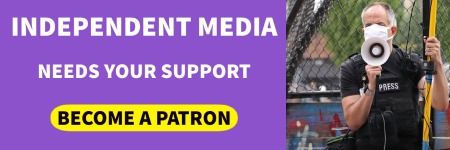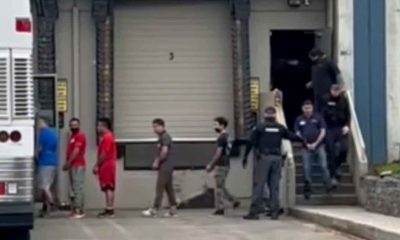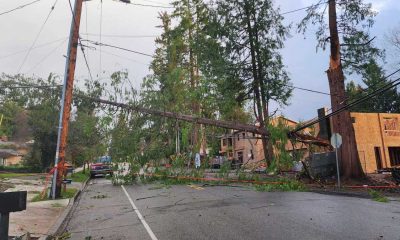Editorial
Opinion: To save Washington hospitals it’s time to close the borders
The political leaders of Alaska, Idaho, and Montana are living consequence free. Compassion should have limits.
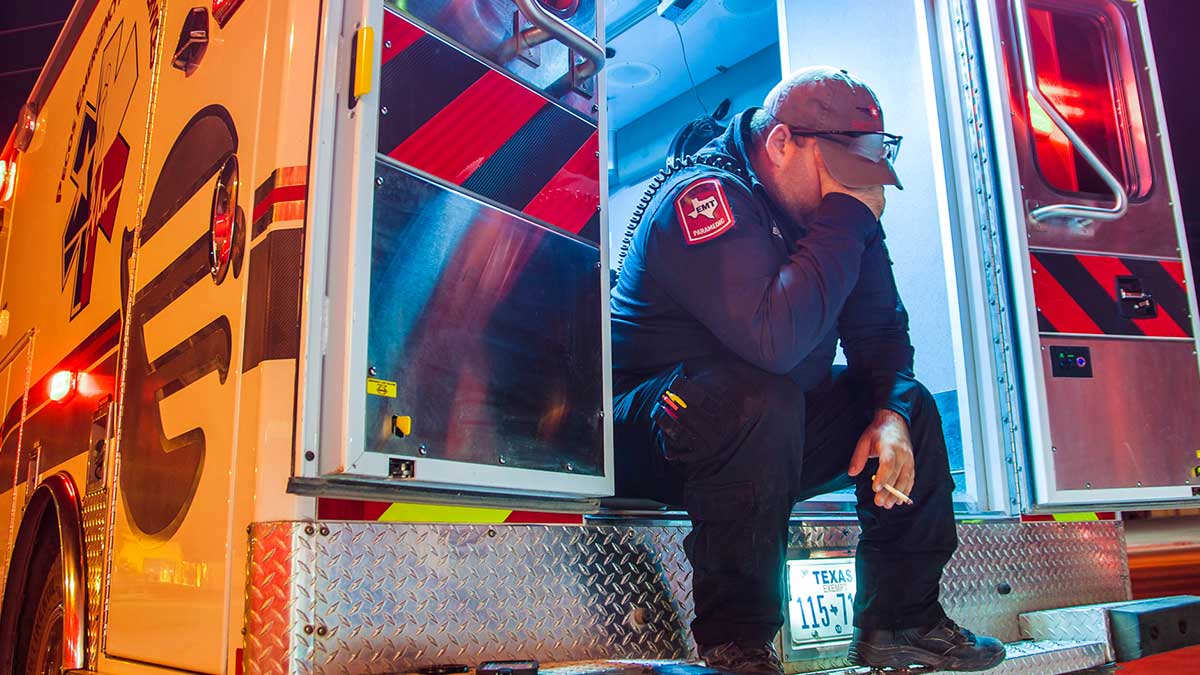
Military leaders, analysts, and planners evaluate the capabilities of a force using combat effectiveness. Combat effectiveness takes more into account than the number of well-trained soldiers and the quality and quantity of available equipment. It considers leadership, psychological stress, the level of support on the battlefield and the home front, and the clarity of mission. If enough of these factors deteriorate, a military unit or even an entire army can become “combat ineffective.” Our medical community has been combat ineffective for months, and no one is doing anything about it. It is time for a strategic retreat, and for officials in Washington state to close the doors to out-of-state COVID patients.
Well before COVID, thousands of healthcare workers walked away from years of training and satisfying careers. A decades-long shift in how America delivers hospital services has led to the shuttering of hundreds of rural and suburban hospitals and the rise of large centers of care in urban areas. The ratio of patients to nurses and doctors had become unmanageable at many facilities. After the last 19 months of relentless trauma where appreciation is now Starbucks gift cards and slices of pizza, thousands more have said enough.
In Washington state, the ongoing onslaught at hospitals goes beyond the surge of COVID patients. In early 2021 the state was in lockdown. Schools were remote. Many people worked from home or were supported by a variety of unemployment programs. With life on pause and elective surgeries essentially canceled, the day-to-day events in hospitals slowed while COVID raged. The surge was a struggle and traumatic, as patients gasped for breath and said goodbyes over Zoom meetings. After shifts were over, nurses and doctors who worked the COVID wards would lay awake with the alarms still ringing in their heads and feared going to sleep because of the nightmares.
By late spring, it appeared that the worst was in the past. COVID cases plummeted nationwide, and Washington state cautiously opened back up in phases. The vaccine rolled out, and with it, a political and cultural war erupted. Hospitals resumed necessary elective procedures again. Mass vaccination sites replaced mass testing sites, and the medical community triumphantly celebrated empty ICUs.
However, the winter had taken a heavy toll. Thousands stopped being hospitalists, quit, retired, or left the country. Highly skilled doctors, nurses, and specialists saw too much death and watched a small but vocal minority call them villains, crisis actors, and paid government agents. Online they were accused of being murderers, stalked, harassed, and for public-facing officials threatened. ICU patients over the winter would scream to see oncologists for “sudden onset lung cancer,” and deny they had COVID to their dying breath. They demanded treatments that offered no therapeutic value because the Intenet told them.
While Washingtonians celebrated their new freedom, the medical community got suckered punched. COVID patients were no longer the issue. A surge in gun violence across the state coupled with people who had their health get worse due to delayed medical procedures, and an increase in everyday traumas like car accidents, took away the respite hospitalists anticipated. At the end of June, a historic heatwave flooded emergency departments statewide with heat-related injuries. On June 28, the Seattle Fire Department responded to 555 911 calls – a typical day would be half of that.
Hospitals’ most significant profits come from elective procedures and out-patient clinics. Cut off from that revenue stream for months, leadership made difficult choices and laid off staff. When the hospitals emptied of COVID patients, the number of elective surgeries exploded, but the staff wasn’t rehired. In many cases, the rush was necessary. People hear “elective surgery” and think tonsillectomies, breast augmentation, and hernia repairs. In reality, cancer surgeries, heart valve replacements, and gallbladder removals were delayed.

By mid-July, the Delta variant of COVID was establishing itself in Washington state. A tale of two Washingtons emerged – highly vaccinated counties in Western and Northwest Washington and low vaccinated counties in Eastern and Southwest Washington. By the beginning of August, a strong sense of déjà vu moved through the medical community, but there was a plot twist. When the state was locked down in January, hospitals had fewer non-COVID patients. Facing a new surge, hospitals were already near capacity.
To the south and east, the situation was worse. Oregon and Idaho were straining with a flood of COVID patients. They were younger, sicker, and needed more intensive care. They were largely unvaccinated and wholly convinced that COVID was just a cold. Some continued to post COVID misinformation from their hospital beds while harassing hospital staff.
Unlike the original and Alpha variant from the winter, the gains made in therapeutic strategies waned. By the spring of 2021, patients on ventilators had a much higher survival rate than in 2020. Doctors had learned a lot more about sustaining patients during the worst phases of a severe COVID infection. Delta took that progress away. Currently, patients on ventilators have a 20% to 30% survival rate, the same as in April 2020. The people dying were younger and healthier, and the deaths were senseless. Some begged to be vaccinated, but it was far too late.
The cross-state connections among the medical community run deep. Hospital networks like PeaceHealth, Providence, and Kaiser Permanente have locations across the Pacific Northwest states of Alaska, Idaho, Oregon, and Washington. Harborview Medical Center in Seattle, PeaceHealth in Vancouver, and Providence in Spokane frequently take transfer patients from out of state. Harborview Medical Center is a lifeline for burn, cardiac, orthopedic, and critically ill patients from the Pacific Northwest, notably Alaska.
By the end of August, it was evident that Washington state was facing a historic surge. Oregon officials were doing everything they could to avoid moving to crisis standards of care, where ethics boards make rapid decisions on who does and doesn’t get access to limited medical resources. In rural counties, COVID tore through the unvaccinated.
In Josephine County, officials actively undermined state efforts to stop the surge and advocated the use of ivermectin. An inventory search at Tractor Supply stores indicated there wasn’t a tube of horse dewormer within a 150-mile radius of Grants Pass. Hundreds protested outside the hospital doors at the 378 bed Asante Rogue Regional Medical Center, while multiple COVID patients died daily.
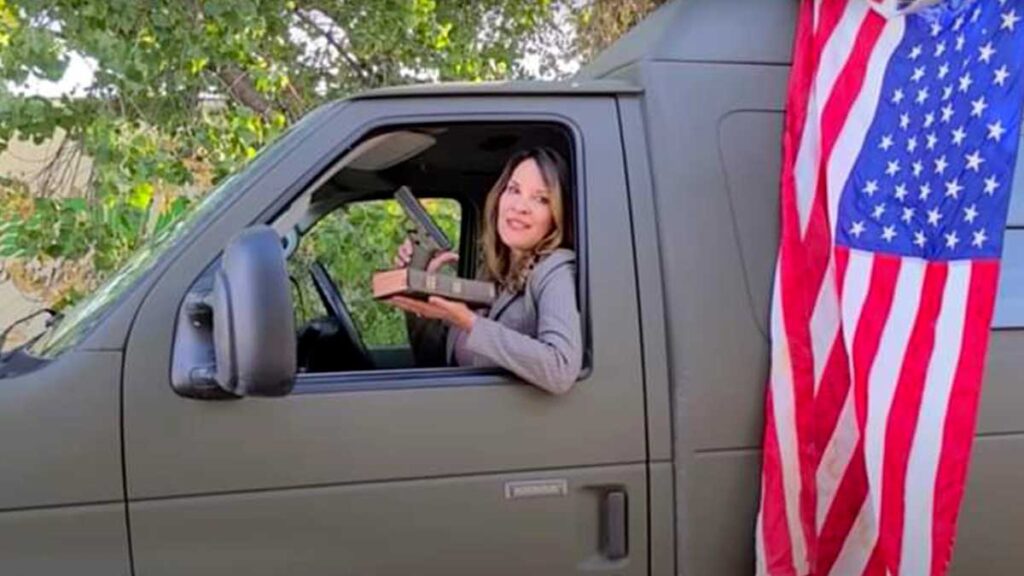
In Idaho, state health officials warned they too were on the brink of moving to crisis standards of care. While doctors begged their citizens to wear masks and get vaccinated, Lieutenant Governor Janice McGeachin platformed COVID misinformation and actively worked against medical leaders and Governor Brad Little. Dr. Ryan Cole, a peddler of COVID misinformation, a man who called the COVID vaccine “needle rape,” and an advocate for America’s Frontline Doctors, set public health policy for Ada County, the largest county in Idaho.
Washington hospitals started taking fewer out-of-state patients as the crisis worsened. Today, the medical systems in Idaho and Alaska have collapsed. Both states believe the worst is yet to come and is weeks away.
In Montana, one hospital in Helena has moved to crisis standards of care. The largest hospital in Billings has stated they are on the brink, and hospitals in Missoula are running out of options.
The entire state of Idaho is under crisis standards of care. Hundreds of patients have been turned away from hospitals. Infected COVID patients requiring high flow oxygen treatment as high as 20 liters per hour would usually be admitted –today, they are sent home. Providers of home oxygen therapy are running out of canisters.
Alaska’s largest hospital is operating under crisis standards of care, and the entire state has less than 20 ICU beds available. State officials are openly lamenting about the constraints Seattle hospitals are facing.
An analysis of news reports, press conferences, and hospital statements reveals that Washington is caring for dozens of COVID patients from Alaska, Idaho, Montana, and Oregon. In Spokane, Providence Hospital has 29 patients from Idaho. Many require BIPAP or ventilators.
For the medical professionals who have been at war for 19 months, the situation is unstainable. PTSD, trauma, and frustration have reached a critical level while staff treats patients in hallways, conference rooms, and tents. Staffing itself is in constant crisis. In mid-August, PeaceHealth St. John Medical Center begged people not to come to the emergency department due to being severely understaffed. Part of the reason? Many unvaccinated hospital employees were patients in the hospital.
A skilled sniper will sometimes wound an enemy soldier on the battlefield. Instead of removing a single enemy, it removes three as someone has to provide care, and a wounded comrade damages morale. The unvaccinated medical staff has the same impact, and COVID is the sniper.
The crisis in the Pacific Northwest has reached the point medical ethics experts are considering the toll transfer patients are taking on Washington and possible options. Dr. Doug White, the director of the University of Pittsburgh’s Program on Ethics and Decision Making in Critical Illness, spoke with NBC News on September 16. While Washington’s health care services may feel a moral obligation to help, the need for action falls to Idaho’s state government.
“Medical practice is regulated at the state level, public health interventions come at the state level, and so in an emergency like this, I do think that the state lines become very important because what we’re seeing is these very stark differences between how Washington state has responded to the pandemic and how Idaho has responded to the pandemic,” he said, noting that Washington’s aggressive safety measures came at some cost to the state.”
Bluntly put, the efforts in Idaho and Alaska have been reactive, not proactive. Even among the unwilling, Washington state did more work than Alaska, Idaho, and Montana. In Western Washington, people rushed to get vaccinated. During the winter surge, Washington hospitals helped carry the load of Idaho, Montana, and Alaska. Lockdowns were unpopular, but a majority of Washingtonians did their part. Idaho has done little to protect its residents, and leadership has hired policymakers who don’t believe in science 101. To use an analogy, Washington was the kid who did the class project alone while Idaho, Alaska, and Montana drank beer behind the school gym.
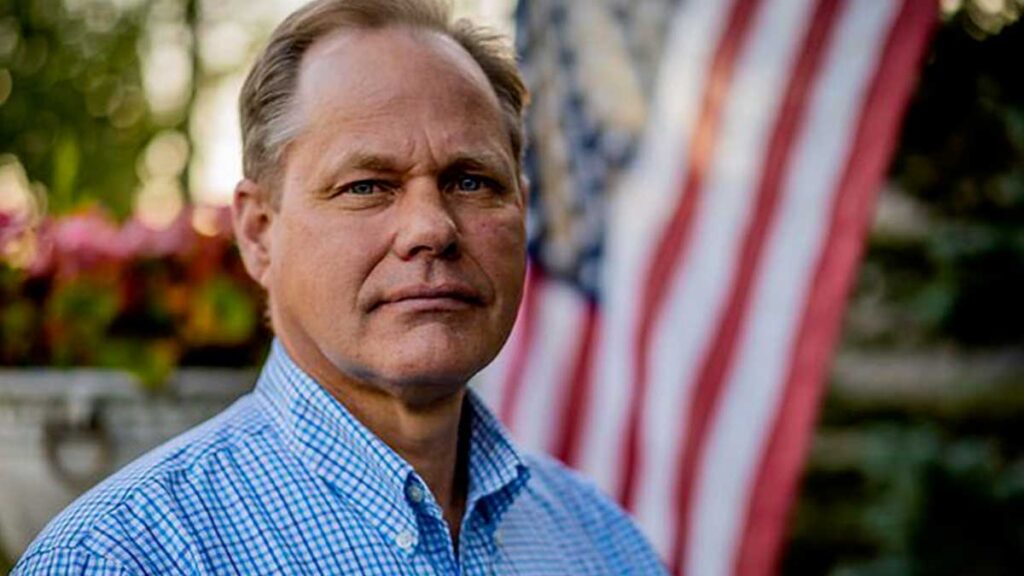
In Alaska, the mayor of Anchorage blamed vaccine mandates for staffing shortages. Hospital officials pushed back vehemently. Although Providence Hospital requested the 5,000 employees in Alaska to get vaccinated on August 6, leaders will allow staff to opt-out if they agree to follow additional safety protocols.
There is a desperate need for a strategic retreat for Washington hospitalists when you look through the lens of combat effectiveness. Our hospitals were short-staffed before COVID and before vaccine mandates. Nationally, hospital systems that have enacted vaccination policies have achieved 96% to 99% compliance, with a handful of outliers.
Staff is working forced overtime, caring for patients in tents, waiting rooms, and hallways. PACUs have been converted into critical care units, slowing down emergency surgeries. With acute care units and ICUs filled, patients are backed up in emergency departments. People waiting for a hospital bed in the emergency department or other makeshift wards are called boarders, and sometimes they are waiting for days. Harborview Medical Center had over 40 boarders last week, more than 20 in the emergency department.
Hospital staff continues to deal with equipment shortages from the necessary agents to evaluate COVID tests, nasal cannulas, oxygen canisters, BIPAP and ECMO machines, and proning beds. Ambulances travel longer distances to do patient transfers and sometimes wait for hours to unload patients. Supplies of vital medications fluctuate, and one hospital in Yakima had an oxygen shortage.
When it comes to having the support of the home front, the medical community isn’t feeling it or seeing it. The COVID denial and anti-vaccination communities are small, but you would never know it on social media. Efforts at Facebook to control COVID misinformation ultimately failed while Twitter struggled to balance free speech versus protecting the public welfare from bull shit. On Tik Tok, misinformation runs wild while subject matter experts who create accurate content have their accounts closed for “community guideline violations.” The appeal process is opaque and capricious.
Medical workers are bombarded with messages that hospitals are empty, COVID is just the flu, and the vaccine doesn’t work. It is psychological warfare, and for some, it includes their friends and family who have fallen into QAnon rabbit holes or have accepted disinformation as the truth. After a 16-hour shift where they put three people into body bags, they see maskless people walking around the grocery store like everything is normal.
While the community tells them they are frauds, hospital management tells them they aren’t valued. As an example, Kaiser Permanente is negotiating in bad faith with its nurses. In Portland, Oregon, the company has offered a 1% pay raise in recent contract negotiations while paying traveling nurses $5,000, $6,000, even $8,000 a week. A nurse who quit to join the ranks of traveling nurses said, “they can treat me bad, or they can pay me bad, but they can’t do both.”
When it comes to clarity of mission, there is none. The American hospital system was not designed or staff to deal with an endless pandemic. Behind closed doors, hospital leaders are discussing the new normal. Until 85% to 90% of the total population gets vaccinated, which is a pipe dream, surges will continue. Hospital leaders are resigning themselves to continued COVID waves tearing through unvaccinated people. All while attempting to play catch up on canceled elective surgeries and supporting a nation fond of saying, “hold my beer and watch this,” for Internet clout.
The easiest way to make a strategic retreat and save what’s left of our battered hospital system is to reduce the patient load. The fastest way that can ethically be accomplished is to stop accepting COVID transfer patients from our Pacific Northwest neighbors.
Regrettably, the last three months have shown that a new tool in the fight against COVID misinformation has been the Delta variant itself. The virus has ruthlessly decimated prominent anti-vaccination voices and the people who followed them into an abyss. Their families and friends, taught the reality of COVID in the most terrible way possible, secretly get vaccinated.
By taking in the COVID patients of Alaska, Idaho, and Montana, Washington makes the crisis less visible in those states. It rewards their government leaders who actively spread misinformation. Idaho’s Lieutenant Governor Janice McGeachin should face the consequences of actively working against any action to protect Idaho’s people from an entirely preventable crisis. It will be increasingly difficult to claim COVID is just the flu, masks don’t work, and the vaccine is needle rape with multiple mobile morgues lined up in parking lots.
For non-COVID patients suffering from emergencies such as severe burns, heart attacks, and injuries from motor vehicle accidents, Washington should continue to try and find a place for them. These are the silent and hidden victims of a collapsing hospital system that is “combat ineffective.”
In medicine, compassion is a critical pillar, but it isn’t limitless. Where is the compassion for our doctors, nurses, specialists, and paramedics? The hospital systems of our neighbors are collapsing, and they are taking our medical community with them. Physician – heal thy self.

